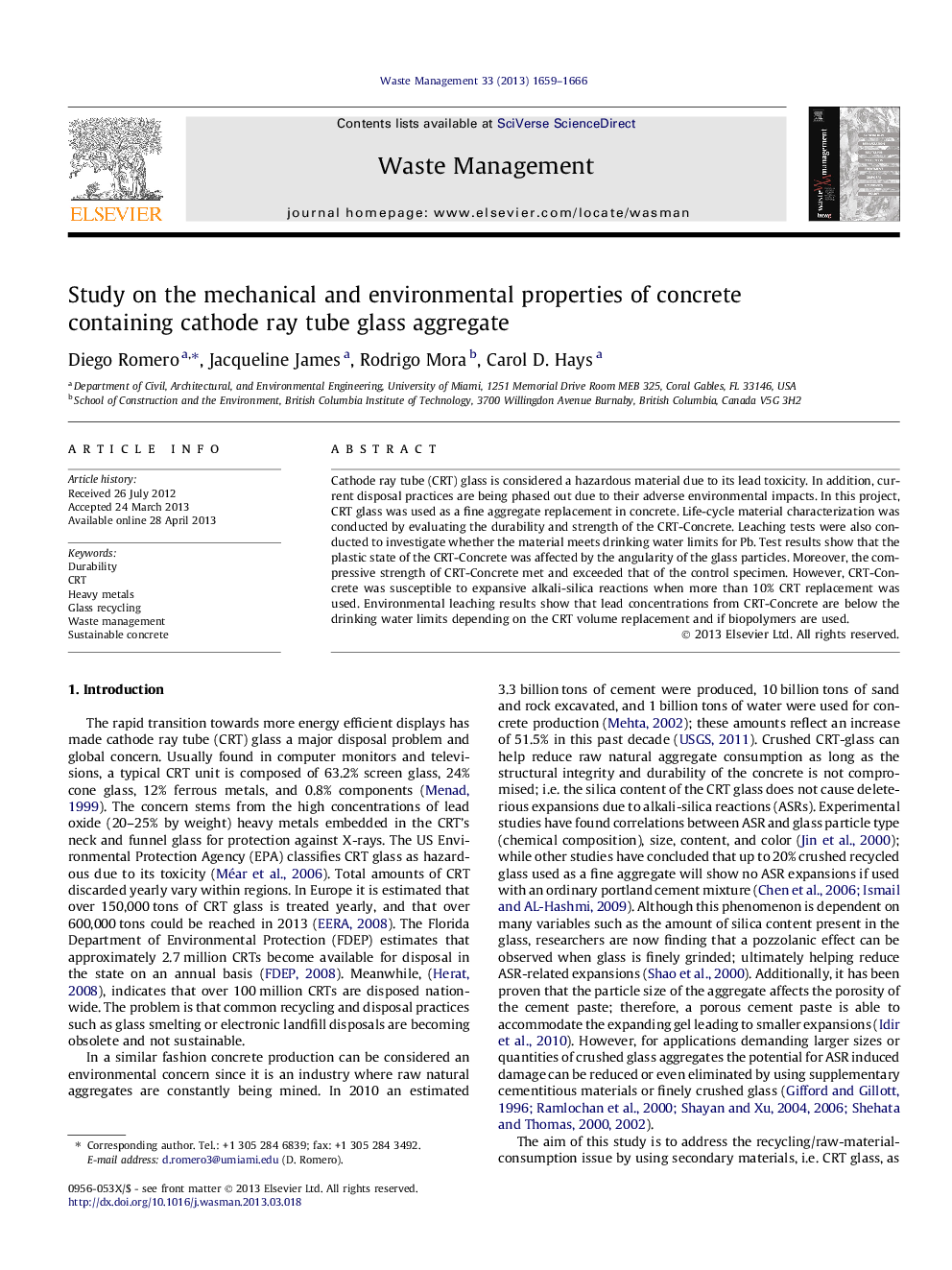| Article ID | Journal | Published Year | Pages | File Type |
|---|---|---|---|---|
| 4471964 | Waste Management | 2013 | 8 Pages |
•The compressive strength of CRT-Concrete exceeds that of the control specimens.•The workability of the concrete is affected by the addition of CRT glass.•A maximum of 10% CRT glass should be used to avoid ASR expansions.•Lead leaching from CRT-Concrete is pH dependent.•Use of biopolymer solutions help reduce lead leaching from CRT-Concrete.
Cathode ray tube (CRT) glass is considered a hazardous material due to its lead toxicity. In addition, current disposal practices are being phased out due to their adverse environmental impacts. In this project, CRT glass was used as a fine aggregate replacement in concrete. Life-cycle material characterization was conducted by evaluating the durability and strength of the CRT-Concrete. Leaching tests were also conducted to investigate whether the material meets drinking water limits for Pb. Test results show that the plastic state of the CRT-Concrete was affected by the angularity of the glass particles. Moreover, the compressive strength of CRT-Concrete met and exceeded that of the control specimen. However, CRT-Concrete was susceptible to expansive alkali-silica reactions when more than 10% CRT replacement was used. Environmental leaching results show that lead concentrations from CRT-Concrete are below the drinking water limits depending on the CRT volume replacement and if biopolymers are used.
